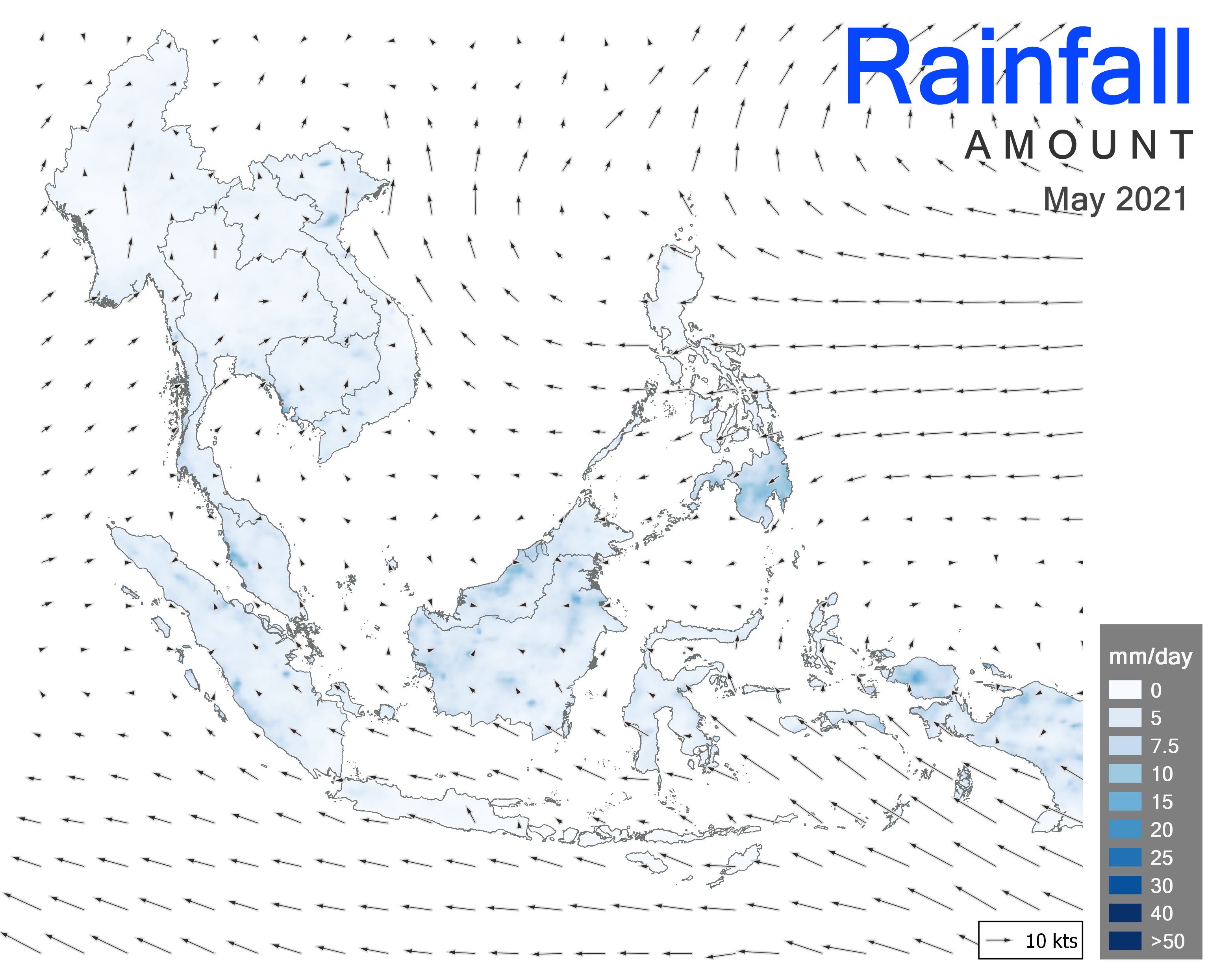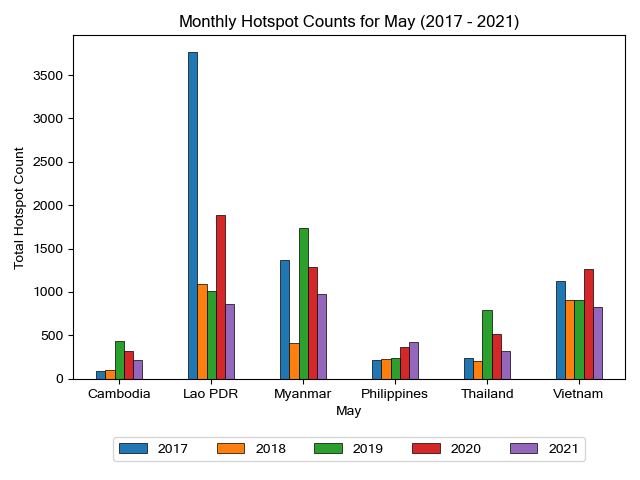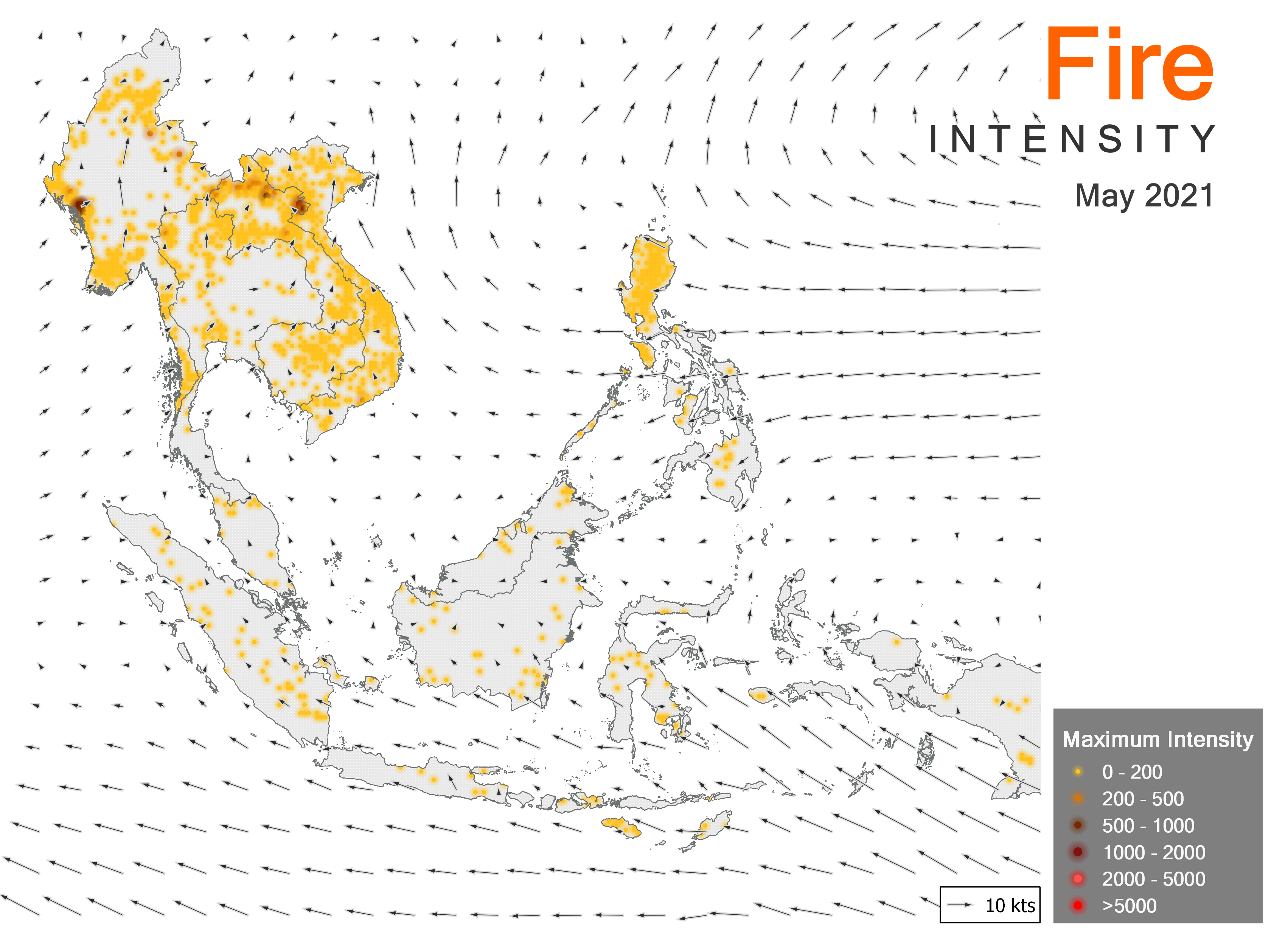Review of Regional Haze Situation for May 2021
1.1 Inter-monsoon conditions prevailed over most of the ASEAN region in May 2021. While most of the region experienced light and variable winds, the prevailing winds over Java, the Lesser Sunda Islands, the Philippines, and Sulawesi blew from the east or southeast.
1.2 During this period, shower activities were observed over most of the ASEAN region. However, drier conditions persisted in the Lesser Sunda Islands and eastern Java (Figure 1).
1.3 For the May review period, the hotspot counts over the ASEAN region for 2021 were slightly lower or comparable to those in previous years (Figures 2 and 3).
1.4 Although hotspot activities were detected in most parts of the ASEAN region, no significant smoke haze was observed in May 2021. Isolated hotspots were detected in most of the southern ASEAN region, contributed by the development of drier conditions there. In the northern ASEAN region, although some hotspot clusters were detected, an increase in shower activities throughout the month led to a gradual improvement of the hotspot situation. ASMC declared the end of the northern ASEAN dry season on 21 May 2021 with the downgrading of Alert Level 1 to Alert Level 0 (Figures 4 and 5).









